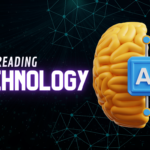Are you ready for a future where opportunities expand beyond your wildest dreams? As we journey deeper into the 21st century, the world is increasingly shaped by technology. From the way we communicate to how we work, technology has become an inseparable part of modern life. Alongside this, education plays a critical role in equipping individuals with the necessary skills to thrive in a dynamic and competitive environment. One of the most valuable forms of education today is Technology and Livelihood Education (TLE).
This field doesn’t just focus on theoretical knowledge; it is designed to equip learners with practical skills that open doors to better livelihoods and opportunities. The relevance of TLE cannot be overstated, as it empowers individuals to navigate a tech-driven world while ensuring that their economic and professional aspirations are met.
1. The Importance of Practical Skills in Today’s Job Market
The job market today is more complex than ever. Employers are no longer just looking for candidates with academic degrees; they want individuals who can contribute practical solutions to real-world problems. In many developing countries, unemployment remains high, even for degree holders. One of the main reasons for this is the lack of relevant, hands-on experience that many graduates have.
Technology and Livelihood Education fill this gap. It focuses on developing both technical skills and livelihood strategies. Whether it’s learning how to operate specific machines, mastering information technology, or developing entrepreneurial skills, TLE prepares individuals for a wide range of industries, such as agriculture, business, home economics, and industrial arts. These are sectors that not only fuel economies but also provide sustainable livelihoods for millions of people.
By incorporating practical learning into traditional education, TLE ensures that learners are better equipped to meet the demands of today’s employers. This form of education emphasizes the direct application of knowledge, which makes individuals more adaptable, resourceful, and ready to seize opportunities that come their way.
2. Empowering Individuals with Technological Proficiency
One of the main components of Technology and Livelihood Education is its focus on technology. In today’s digital world, technological literacy is not just an advantage; it is a necessity. The proliferation of digital tools and platforms has transformed the workplace, making it essential for people to be proficient in technology to remain competitive. Whether it’s basic computer skills or more advanced technical training in areas like programming, automation, or digital marketing, TLE equips learners with the skills they need to succeed.
For example, consider the impact of information and communication technology (ICT) on industries like business and education. Companies now use various digital tools for management, customer service, and product development, while schools have transitioned to online learning platforms. Without a foundational understanding of technology, navigating these environments can be challenging. TLE ensures that individuals are not left behind in this digital revolution. By offering courses that teach essential technical skills, TLE prepares students to excel in tech-driven industries.
Moreover, TLE promotes digital inclusion by reaching out to underserved communities. In many rural areas, access to technological education is limited, which in turn limits the residents’ opportunities for economic improvement. TLE programs often address this gap by providing accessible technology training, ensuring that individuals from all backgrounds have the chance to benefit from the digital economy.
3. Fostering Entrepreneurial Spirit and Self-Sufficiency
While technological proficiency is crucial, TLE goes beyond teaching technical skills. It also places a strong emphasis on livelihood education, which prepares individuals to become self-sufficient. In many developing countries, self-employment and entrepreneurship are key drivers of economic growth. However, starting and maintaining a successful business requires a combination of practical skills and financial literacy, both of which are covered extensively in TLE programs.
Whether it’s starting a small farm, running a home-based business, or setting up a local tech consultancy, TLE provides individuals with the knowledge and tools to succeed. Courses in areas like marketing, finance, and management empower students to think like entrepreneurs and make informed decisions that will benefit their ventures in the long term.
This entrepreneurial focus not only helps individuals create their own income opportunities, but it also contributes to community development. Entrepreneurs often become job creators, providing employment for others in their communities. In this way, TLE has a ripple effect, uplifting not just individuals but entire communities by fostering self-sufficiency and economic growth.
4. Bridging the Gap Between Formal Education and Industry Needs
One of the most significant challenges facing formal education systems around the world is the disconnect between what is taught in classrooms and what is needed in the workforce. Many students graduate with degrees that don’t necessarily match the demands of the industries they want to enter. This mismatch leads to underemployment, where individuals work in jobs below their qualification level, or worse, unemployment.
Technology and Livelihood Education seeks to bridge this gap by aligning its curriculum with industry needs. The courses offered in TLE are designed with input from professionals and businesses to ensure that they are relevant to current market demands. This ensures that TLE graduates have the specific skills that employers are looking for, making them more attractive candidates for jobs.
For example, in the agriculture sector, TLE programs may include modern farming techniques, sustainable agriculture practices, and food processing. In the tech industry, courses might focus on software development, digital marketing, and IT troubleshooting. By tailoring education to the specific needs of different industries, TLE programs make sure that students are ready to enter the workforce and contribute effectively from day one.
5. Lifelong Learning: Adapting to an Ever-Changing World
One of the key advantages of TLE is that it promotes a mindset of lifelong learning. In today’s fast-paced world, industries are constantly evolving due to technological advancements. The skills that are relevant today may become obsolete in a few years. This reality has made it increasingly important for individuals to continuously upgrade their skills and knowledge.
TLE fosters this adaptability by encouraging learners to be curious and open to new ideas. Whether it’s learning how to use a new piece of technology, adapting to new business practices, or finding creative solutions to livelihood challenges, TLE students are taught to embrace change rather than fear it. This focus on continuous learning ensures that individuals can keep pace with the ever-changing demands of the modern world.
Moreover, TLE’s emphasis on practical skills means that learners can quickly adapt to new roles and responsibilities. Whether they choose to pursue a career in a traditional industry or venture into something entirely new, TLE graduates have the foundational skills and mindset to succeed.
6. Expanding Global Opportunities
Technology and Livelihood Education not only equips individuals with the skills to succeed locally but also prepares them to compete in the global marketplace. In an increasingly interconnected world, the opportunities for remote work, international collaborations, and global trade are more accessible than ever before. TLE students, with their practical skills and technological proficiency, are well-positioned to take advantage of these global opportunities.
For instance, with the rise of freelancing platforms and online marketplaces, skilled individuals can offer their services to clients from around the world. A TLE graduate with expertise in web development or digital marketing can easily work with clients from different countries, expanding their opportunities beyond local borders. Similarly, entrepreneurs can use digital platforms to sell their products or services to a global audience, thereby increasing their income potential.
The combination of technology and livelihood education opens doors to new opportunities that were previously out of reach for many. By preparing individuals to thrive in a globalized world, TLE empowers them to pursue their dreams, no matter where they are from.
Conclusion
In a world where change is the only constant, Technology and Livelihood Education serves as a vital tool for individuals seeking to improve their lives. By offering practical, hands-on skills that are relevant to both local and global markets, TLE equips learners with the tools they need to seize better opportunities. Whether through technological proficiency, entrepreneurial ventures, or lifelong learning, TLE empowers individuals to shape their own futures, creating a ripple effect of positive change in their communities and beyond.
As we continue to embrace the possibilities of a tech-driven world, it becomes clear that TLE is not just an educational program—it is the key to unlocking a brighter, more prosperous future for all.
FAQs
What is the purpose of Technology and Livelihood Education?
The purpose of Technology and Livelihood Education (TLE) is to equip students with practical skills and knowledge to become self-reliant and prepared for various career paths.
What are the four areas of Technology and Livelihood Education?
The four areas of TLE are Agriculture, Home Economics, Industrial Arts, and Information and Communication Technology (ICT).
What are the five common competencies in TLE?
The five common competencies in TLE are communication, teamwork, problem-solving, safety practices, and technical skills relevant to specific industries.
What is the purpose of the TLE subject?
The purpose of the TLE subject is to develop student’s practical skills and prepare them for employment or entrepreneurship in various livelihood fields.








